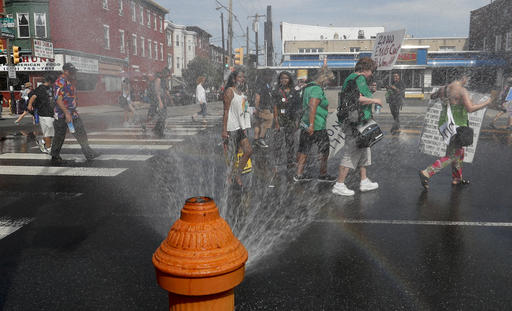PHILADELPHIA: The heat wave gripping parts of the country including Philadelphia, where tens of thousands are descending upon the city for the Democratic national Convention this week, is not going away anytime soon and will hit a peak Monday with temperatures in the city feeling like 108 degrees.
Excessive heat warnings will continue Monday, the first day of the convention, in the Philadelphia area, most of the Midwest and regions out west. It’s due to a dome of high pressure, meteorologists say, that’s affecting most of the United States and contributing to drought conditions in the Northeast and continuing to fuel wildfires in California.
“It’s fair to say that the vast majority of the nation has been experiencing above normal temperatures for the past week,” said David Robinson, New Jersey state climatologist at Rutgers University.
The dome of high pressure traps hot air and is the basis for the “critical high temperatures” the country has been experiencing the past week, Robinson said, even for being the warmest time of the year.
Thunderstorms are common, as they were in parts of New England over the weekend, but don’t help much with drought conditions in the Northeast and out west. Particularly dry weather in areas like Massachusetts and New York have forced farmers to choose which crops they will water and which will just not survive the season.
“The Northeast is a little bit of a mixed bag, but the bottom line is that the conditions have deteriorated over the past several weeks to a couple of months,” said Rich Tinker, a drought specialist at the national Oceanic and Atmospheric Administration.
In southern California, where drought has persisted for years, 18 homes have been destroyed and more than 34 square miles of brush have been blackened in a blaze that sparked Friday. Los Angeles Fire Chief John Tripp said the fire “started consuming houses” ”like a freight train.”
A main difference between the drought in the Northeast and out west is that the Northeast can pull out of those conditions at any time, Robinson said.
“The good news is that there’s always a chance that the pattern can switch in several weeks at any time of the year,” he added.
(Sourced from agencies, Feature image courtesy:AP)


























